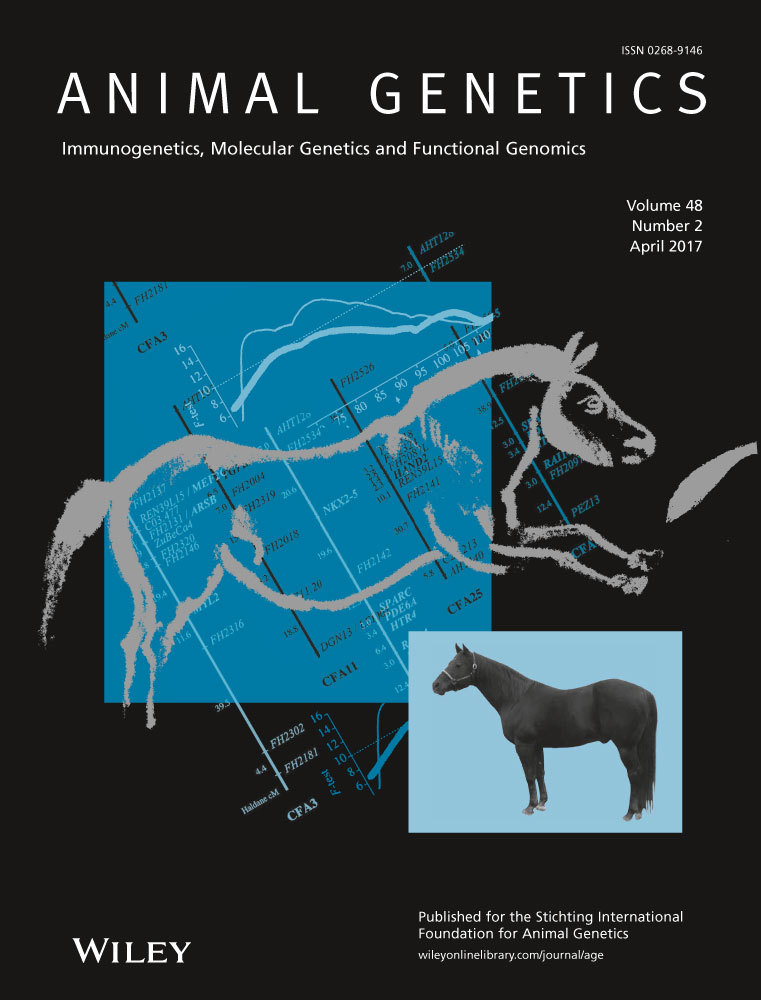The tumor necrosis factor g1022G>A polymorphism is associated with resistance to tuberculosis in water buffalo (Bubalus bubalis)
Mycobacterium bovis, the causative agent of bovine tuberculosis (bTB), colonizes both wild and farm animals and remains endemic in many countries.1-3 The incidence of bTB in water buffalo (Bubalus bubalis) in southern Italy remains high (0.65%) despite efforts (based on a test-and-slaughter policy and exclusion of vaccination) made to control it (www.izsmportici.it). Selective breeding for disease-resistant genotypes therefore represents an approach supporting disease control,4, 5 and different studies have identified several genes important for controlling the disease.6-8 The role of tumor necrosis factor (TNF) in TB has been confirmed by the unrestrained growth of mycobacteria in TNF knockout mice caused by unpaired T-cell recruitment and unstructured granuloma development.9
Thus, using samples (59 cases and 125 controls) recruited by Alfano and colleagues,6 we amplified and sequenced in 20 subjects (10 cases and 10 controls) a DNA fragment of 554 bp (forward primer: 5′-AACACACCCCTGAGAGACAG-3′; reverse primer: 5′-AGCAGAGATACAGACATAAAGA-3′) that spans exon 1 and part of intron 1 of water buffalo TNF (GenBank accession no. JQ043173.1). We identified a G>A substitution at position 1022 (ss2019492548), and analysis of the flanking regions showed a high level of conservation of the area among related species (Table S1). In addition, using regrna software (http://regrna.mbc.nctu.edu.tw/html/prediction.html), we demonstrated that the g.1022G>A mutation relates to the sequence AGAGAA, a polypyrimidine-rich tract adjacent (about 50 bp) to the splice site, which could potentially affect gene expression.10 Based on the above findings, we reasonably assume that the g.1022G>A polymorphism could be a good candidate to be investigated as a tuberculosis-associated polymorphism.
To confirm our hypothesis, we enlarged the analysis to the remaining subjects using allele-specific PCR (Table S2). As expected in cases of association, genotypic frequencies at the TNF locus were in equilibrium among controls and in disequilibrium among cases11 (Table S3). Subjects carrying the genotype AA were less represented among cases (three out of 56 controls). When we compared the AA vs. AG/GG ratio between case and control subjects by Fisher's exact test, the odds ratio (OR) was 0.19; the 95% confidence interval (CI) was 0.08303–0.8447; P-value (two sided) = 0.0047 (Table 1).
| Genotype | Cases | Control | OR (95% CI) | P-valuea |
|---|---|---|---|---|
| AA | 3 | 27 | 0.19 (0.09210–0.8211) | 0.0047 |
| GA/GG | 56 | 98 |
- a Fisher's exact test.
Thus, AA subjects are about five times more likely to be resistant to bTB compared to those with the GA/GG genotypes. The OR is within the range of 0.03–0.22, suggesting strong genetic protection.12 To further validate our hypothesis, we replicated the study in an independent group of 40 cases and 60 controls (samples recruited during the period 2012–2015; IZSM). The results confirmed previous data indicating that genotype AA is more represented in the control group, and we found only two out of 15 AA genotypes in the 40 cases (OR: 0.19; 95% CI: 0.05499–0.8959; P-value (two sided): 0.0242) (Table S4).
Comments
We identified a new polymorphism g.1022G>A in the water buffalo TNF gene. We demonstrated in two independent case/control groups that genotype AA is associated with resistance to bTB in water buffalo. Thus, we believe that this polymorphism could be used as a disease-associated marker in breeding programs.
Acknowledgements
Dr. Marco Iannaccone was supported by research funding from Fondazione con il Sud (Project no. 2011-PDR-18, ‘Biosensori piezoelettrici a risposta in tempo reale per applicazioni ambientali e agro-alimentari’).




